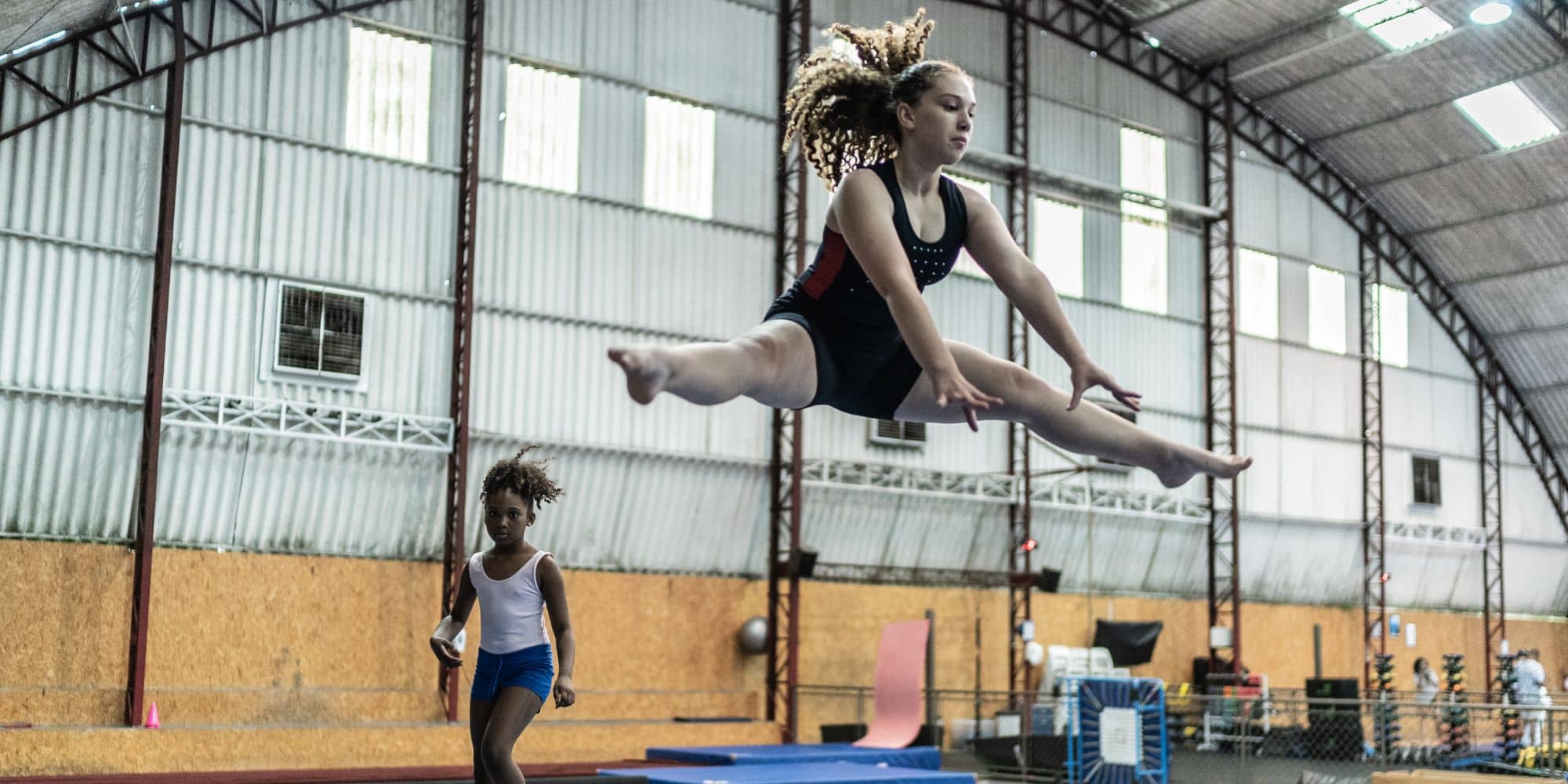Strategies to minimize trampoline injuries through careful instruction and equipment use.
Following well-established trampoline use guidelines can help to reduce the exposure for trampoline accidents. The following guidelines are offered by USA Gymnastics.
Gymnastics professionals, as well as trampoline athletes, should follow the guidelines below for the use of trampolines:
- Opening and closing a trampoline can be difficult and dangerous. Trampolines are heavy and require careful handling. (Staff responsible for opening and closing the trampoline should be well versed on the process.)
- Proper warm-up should precede trampoline use.
- Beginning students can learn many skills with very small bounces or no bounce.
- The most important aspect of performance on a trampoline is control. Uncontrolled bouncing should not be allowed.
- All athletes should learn to perform a “check” bounce or taught to “freeze,” which involves flexing the knees when the gymnast lands on the trampoline bed. Flexing the knees results in immediate cessation of the bounce. This landing position should be reinforced with each lesson.
- New users of the trampoline should begin by simply walking around the trampoline bed to get a feeling of the flexibility of the bed.
- Athletes should wear proper clothing when using a trampoline. An athlete’s attire should not impede movement. Shoes should not be worn on trampolines. Socks may be a problem on solid type (polypropylene) beds because of the inherently slippery nature of socks on such beds.
- On competitive webbed trampoline beds, gymnastics shoes or socks are recommended.
- Athletes should learn fundamental bounces and body positions before attempting more advanced skills.
- Athletes should climb on and off the trampoline. Athletes should never jump from the trampoline to another object, another trampoline or to the floor. Proper entry and exit from the trampoline should be included in each lesson plan.
- Only one person should bounce on a trampoline at a time. An exception to this rule involves “on-bed” spotting methods, which should only be used by experienced and skilled trampolinists, coaches and instructors.
- Gymnasts should bounce only as high as they can easily control.
- Gymnasts should attempt to bounce near the center of the trampoline bed.
- Gymnasts should not attempt to step or land on the springs.
- Gymnasts should not bounce when they are overly fatigued. Keep turns short.
- Most serious trampoline injuries occur during a somersault. Somersault maneuvers should be reserved only for qualified athletes under close and careful supervision.
- Somersaults to anything but a landing on the feet should be practiced only under careful and close supervision.
- Trampolines should only be used when instructed by a competent coach or instructor.
- Trampolines should not be used when the performer is ill or under the influence of medication.
- Objects should not be placed under the trampoline.
- Generally, trampolines should be surrounded by mats, some form of restraining equipment that prevents the gymnast from falling off a trampoline and spotters; or the athlete should perform all difficult skills in an overhead spotting belt.
- Spotters and other athletes should not sit or lean their arms on the trampoline frame while another athlete is jumping.
- Knee drops should not be permitted without proper instruction.
- Stomach drops should not be permitted without proper instruction.
Additional strategies to consider include establishing guidelines that require management (coach) approval to be on the gym floor in any capacity, keeping manageable supervision ratios, authorization for private lessons, displaying signs reinforcing that gym access is prohibited unless there is management approval, signage outlining guests’ expectations and having all gym participants sign a waiver or release before using the gym.
Source:
2022, USA Gymnastics Safety/Risk Management Handbook, USA Gymnastics, Inc.

